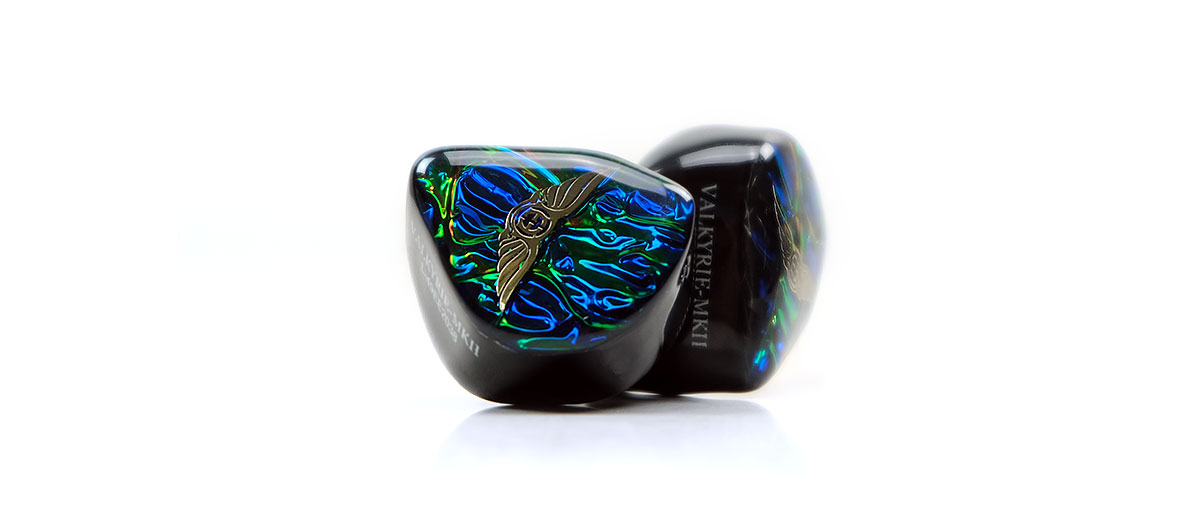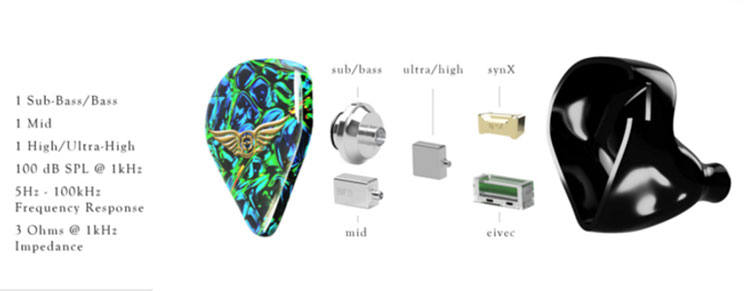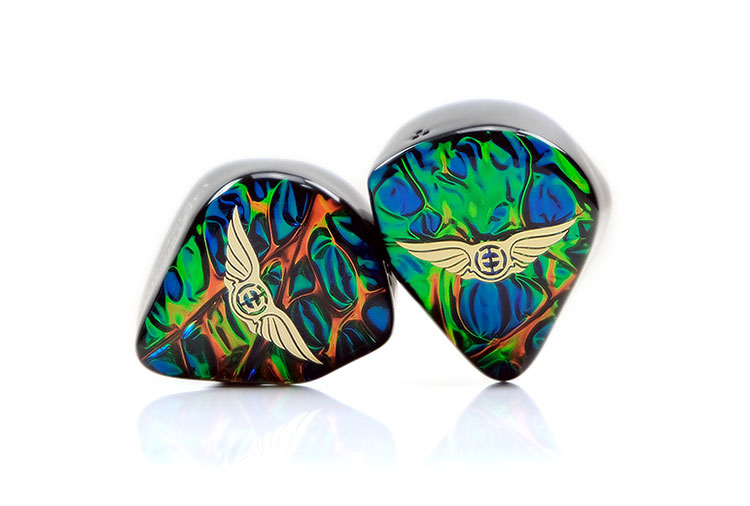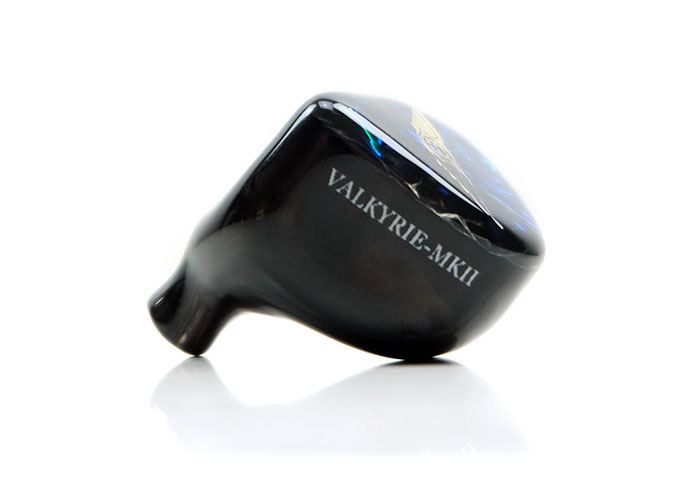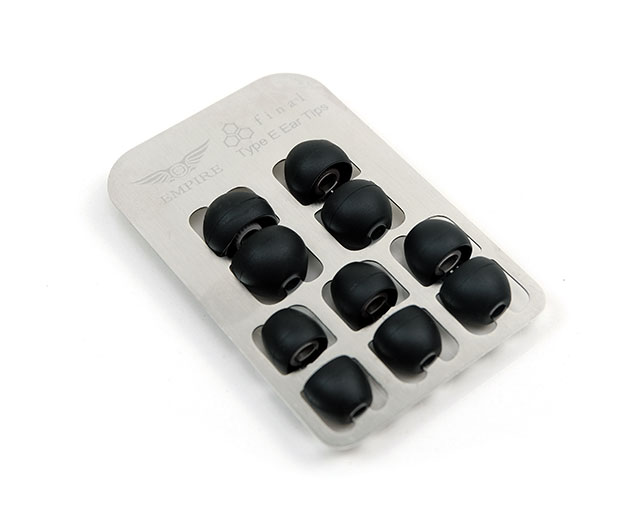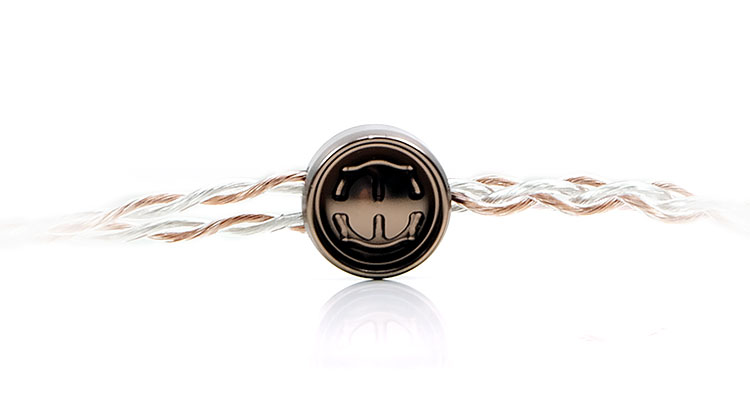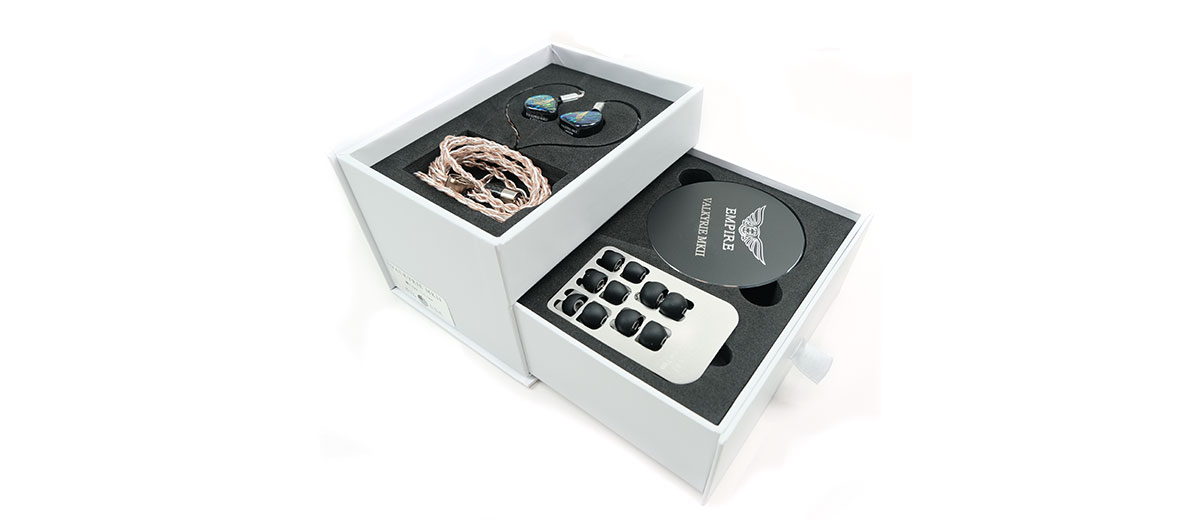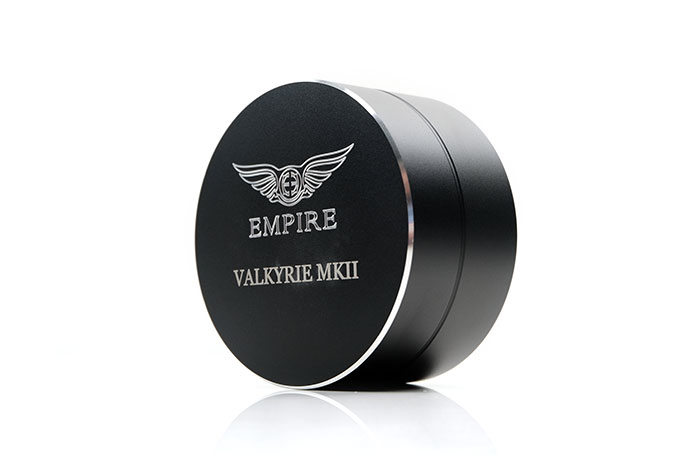The Empire Ears Valkyrie MKII is a revision of the original 2019 tri-brid electrostatic driver Valkyrie featuring a re-engineered 4-way synX crossover. It is priced at $1599.
Disclaimer: The Empire Ears Valkyrie MKII was sent to us in exchange for our honest opinion in this review. Many thanks to Empire Ears for giving us this opportunity.
You can read about previous Empire Ears products reviewed on Headfonics here.
Note, this 2-page review follows our new scoring guidelines for 2021 which you can read up on here.
Reimaging what you already have by using your latest and greatest technology seems to be a running theme over the last year or so for IEM companies.
Campfire did it with a huge chunk of their range in 2020 and in 2021, and Empire Ears have decided to on a similar path by revisiting some of their classic monitors with a fresh makeover.
The three monitors up for a refresh this year are the ESR, the Bravado, and our 2019 reviewed Valkyrie. Cunningly renamed to ESR MKII, Bravado MKII, and Valkyrie MKII, each monitor has gone through the tech rinser with upgrades covering drivers, crossovers, cables, as well as external designs.
And yes we will be reviewing all three here on Headfonics, with the first review focusing on the Valkyrie MKII. Thankfully, Empire Ears have not adjusted the prices upwards with the Valkyrie MKII still being sold for $1599.
Tech Highlights
The Valkyrie MKII actually has the same 3 driver configuration as the original version. That means a tri-brid fusion of a single dynamic driver for the lows, a proprietary balanced armature for the mids, and a single Sonion EST driver for the highs with a re-engineered 4-way synX crossover.
However, this time around gone is the original Weapon IX dynamic driver and instead, the Valkyrie MKII is now using their new Weapon IX+ version found inside the flagship Odin and their recent Hero monitor.
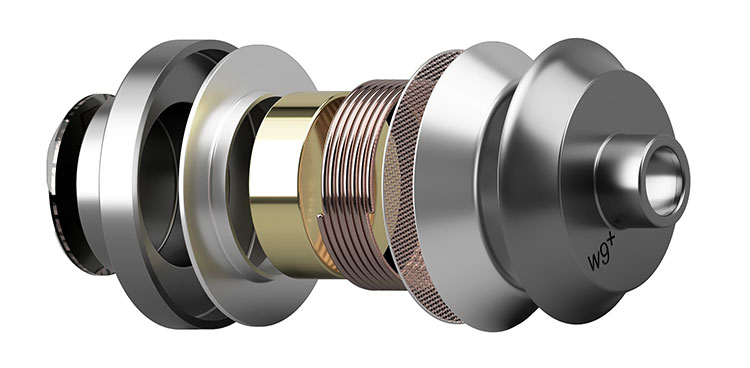
Weapon IX+
The Weapon IX+ inside the Valkyrie MKII is a proprietary rare-earth magnet-infused dynamic driver. The original Weapon IX driver was used before in multiple configurations in their Nemesis, Valkyrie Mark I, and the Legend X. Technically, the 9 or the IX referred to is the actual size of the driver as in 9mm.
The defining characteristic in the design of the first Weapon IX dynamic driver is how the woofer is enclosed in a tuned bass-reflex system. It has a front-firing port and rear-firing vent to reduce distortion and enhance frequency extension. This is different from traditional DD designs that rely more on internal shell enclosures for volume and can often end up being fairly inefficient.
This time around Empire Ears has designed a Weapon IX driver, (the + version), with a larger internal coil diameter and an improved suspension design to reduce potential peak-to-peak distortion. That should mean a bass response on this new driver which is tighter and even cleaner than the original driver performance.
We all know the Valkyrie was a boss for bass, so this is a key upgrade for me considering the excellent low-end performances of the Hero and the Odin.
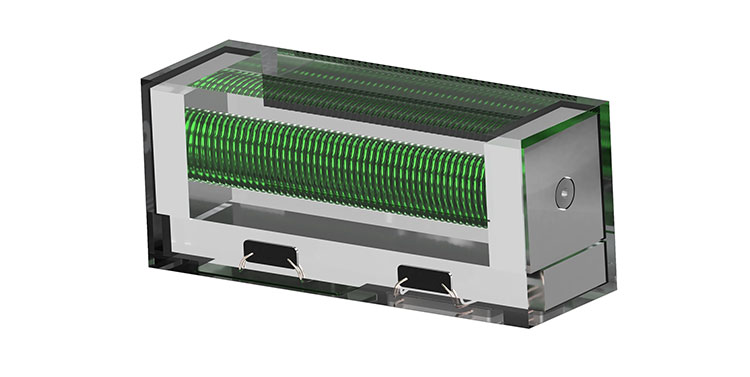
EIVEC
EIVEC stands for Empire Intelligent Variable Electrostatic Control and it is designed to work in tandem with their synX crossover network. You can consider it as a measure of additional control on the EST driver through electronics components and how it works in tandem with the other drivers.
Its main job is to ensure that the EST driver works optimally across a potentially vast 4kHz-100kHz range without upsetting the harmonic balance with the BA and Weapon IX+ drivers.
With the reengineering of the synX, it does seem logical that the EIVEC would get some tweaks as well that affect the treble response of the Valkyrie MKII EST drivers. You can read more about that on page 2 in our sound impressions as it does sound a little different from the original.
A.R.C.
The Valkyrie MKII uses Empire Ear’s A.R.C tech which is being progressively applied now to all new Empire Ear monitors including the recent Hero and Odin.
A.R.C is short for Anti-Resonance Compound and is a special type of damping coating used on the inside of the Valkyrie MKII’s shell. It is applied to virtually every component used such as the drivers, tubes, and crossover boards.
Empire Ears claims that this coating adds a critical level of mass or solidity to the internal components. This, combined with ferrofluid damping inside the drivers, creates a high level of clarity, better efficiency, and importantly, deeper bass which the Valkyrie MKII is really tuned for.
Design
Aside from the highlights below the Valkyrie MKII sent to us is the universal version whereas the first Valkyrie we received back in 2019 was the custom version so this is quite a different design approach. The form factor of the Valkyrie MKII is virtually the same size and shape as the contoured Hero which means it’s light and relatively compact.
The universal sample we have here bears a strong resemblance to the universal Odin we reviewed last year. The reason for the harmony in aesthetics is the use of their excellent Dragonhide faceplate combined with an opaque onyx acrylic hollow-body shell.
Dragonhide was launched by Empire Ears a while back and it is a visual treat with a mix of interlocking colored layers using a reflective rainbow effect for maximum ‘pop’. This is a combo that I believe was also a second plate and shell of choice for the original universal Valkyrie MK1 universal after the first run in pure black.
There a few differences between it and the Odin finish. One being the deeper color saturation of Odin’s Bifrost Dragonhide plate edition and the second is the use of the Borromean Valknut symbol on one of the plates.
These plates are also adorned with Empire Ears trademark gold-winged logos on both shells and combined with the reflective Dragonhide color tone and polish they have an almost3-D-like quality.
Comfort & Isolation
If you are already used to the Hero or Odin in your ear the experience is very similar. This is a relatively compact shell with good contouring in terms of width and lightweight acrylic materials making it a very comfortable fit.
The nozzle is actually deceptively long, (see picture above), though not Noble Audio long, making it a relatively tall monitor but it also means it can get a pretty decent amount of depth into your ear canal depending on the tip you use.
Like the Hero and the Odin, the Weapon IX+ venting system on the rear of the shell does not seem to diminish the excellent passive isolation capability of the Valkyrie MKII which is equal to the two aforementioned monitors, i.e. really good. This is almost BA level of isolation which I would have to put down to the contouring, nozzle, and Final E tips fitting quite well.
Tips
The universal Valkyrie MKII comes with the standard single bore Final E silicone tip line-up in the snazzy little metal holder tray. As before you get a total of 5 different sizes from super small to extra large, (SS, S, M, L, LL). I tend to settle on the L fitting more than the LL as I can get a bit more insertion depth and still retain a good seal with this size.
The Final E tips have slowly become my tip of choice with high-energy monitors such as the Valkyrie MKII, Odin, and Hero. They really tease out a much more explosive sound than many regular silicone tips but at the same time give you a seal on par with foams.
You do get the mandatory driver flex ‘pop’ from the Weapon IX+ when you get your initial seal on the Valkyrie MKII which some might find a bit jarring initially. That is a common trait for all the monitors that use this dynamic driver in EE”s line-up. Once you get a seal, it will not happen again.
Just because I love these tips should not stop you from experimenting if you have some alternatives out there. The performance changes are quite similar to the tweaks I got on the Hero when i swapped a few.
For example, SpinFits tend to offer a little more warmth and relaxation through the curve and do better on the mids for presence. Foam tips will dampen down the treble even further and retain a softer warmer tone on the low-end to the mids but for me, they are a little too relaxed sounding which is not how I want the Valkyrie MKII to sound.
Stock Cable
The stock Valkyrie MKII cable is called the Alpha Hybrid IV and is a ‘new old’ design so to speak. It sort of takes a leaf out of the Hero cable implementation in terms of aesthetical enhancements over the original design.
The core wire is still the excellent mid-ranger Effect Audio Eros II from the original so the sonic performance and coloration will be the same. This is a 4-wire 26AWG UPOCC Litz copper/UPOCC silver hybrid cable wrapped in a PVC translucent jacket so you can see that nice blend of silver and copper wire in its tight braided twist.
The microphonics on this supple cable are non-existent, as you would expect from any good cable. It is nice and soft, fairly lightweight, and next to no memory retention so you will not have any kinks or tangles jamming up your day-to-day use.
The barrels and splitters are where you will find some of those upgrades. The splitter is very much an EE creation with what looks to be a copper-toned aluminum ‘wheel’ with the EE logo elegantly carved into its center. It is pretty cool actually and a nice matching tone to the copper wiring that shines through the translucent jacket.
Terminations
The Alpha Hybrid IV is terminated with an aluminum and carbon fiber printed jack barrel at one end and their new overmolded 0.78mm 2-pin connectors from the Hero’s all copper Alpha IV on the other end.
These connectors a little bit longer than EA connector barrels and have a little bit of indentation on the sides for better grip also. You can also order the Alpha Hybrid IV in a 3.5mm TRS or 2.5mm TRRS version. The one we have here is the 2.5mm TRRS or balanced version.
Accessories & Packaging
Lots of white to sum it up which seems to be the way EE is going with their product packaging these days. Everything from the design, articulation of the accessory shelving and layout is now very consistent. This is a compact but deep box with a well-thought-out presentation.
Slide off the white sleeve and you get a tidy 2-piece tiered modernistic all-white slider box similar to the Odin and the Hero. The cable plus the drivers are neatly housed on the top-tier in their own display foam and the accessories are all housed in the slide-out tray just below.
Inside the slider tray, you get Empire Ears’ standard durable round screw aluminum case printed with the EE branded wings and a text engraving of “Valkyrie MKII”. You also get a small cleaning tool under the tips tray and a black satin cleaning cloth inside the aluminum case also branded with “Empire” in white.
Carry Case
The threaded aluminum puck case now seems to be the norm with all recent Empire Ear monitor releases and the Valkyrie MKII is no different. These are super sturdy by the way with a rubber finish on the base and under the lid for a bit of protection against knocks.
Apparently, it is also weatherproof and it does look fairly tight when the lid is screwed shut. It is a shade on the heavy side though so I am not 100% sure I would be using it on tight weight limits for travel.
The Final E tips come in their own little silver tray which I much prefer over cheaper cardboard variants that a lot of mid-fi IEMs seem burdened with. Aside from that you also get some stickers, a product brochure, and a thank you card.
Click on page 2 below for sound impressions and select comparisons.

